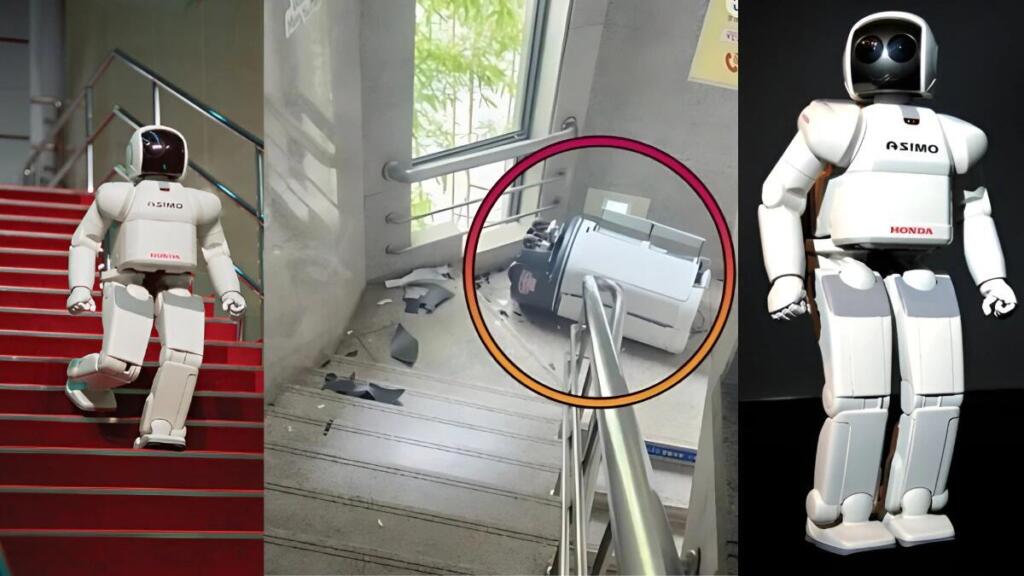Work pressure is no longer just a human issue; it seems to be affecting robots too. In a surprising incident on June 26, the Gumi City Council in South Korea reported the death of their premier administrative robot. The robot, which had been serving as a city council officer, was found at the bottom of a six-and-a-half-foot flight of stairs. The council is speculating whether the robot’s demise was an act of suicide. According to an official who spoke with Agence France-Presse, the robot was seen “circling in one spot as if something was there” before the tragic fall.
The Robot’s Role and Capabilities
Appointed in August 2023, the robot was a pioneer, being the first of its kind to serve as a city council officer. Manufactured by Bear Robotics, a California-based startup renowned for its restaurant-serving robots, this robot had unique capabilities. It could move between floors independently by calling an elevator and was responsible for daily document deliveries, city promotion, and providing information. The robot worked from 9 a.m. to 6 p.m. and held a civil service officer card, much like any other human employee.
Investigation and Speculation
The sudden and mysterious death of the robot has prompted Gumi City officials to launch a thorough investigation. They plan to analyze the collected pieces to understand what led to the robot’s apparent distress. An official mentioned the robot as a “diligent” worker, adding to the confusion over why it would seemingly take such a drastic step.
The Broader Context of Robotics in South Korea
South Korea is known for its rapid adoption of robotic technology. The International Federation of Robotics highlights that South Korea has the highest robot density in the world, with one industrial robot for every ten human employees. This incident has sparked discussions about the potential for robots to experience stress or other human-like emotions, raising questions about the future of robotics in the workplace.
Now Even Machines Can’t Handle Work Pressure
In a surprising turn of events, machines are now succumbing to work pressure. This highlights a new dimension in the modern workplace, where even robots designed for efficiency are overwhelmed. As technology advances, the expectations placed on machines increase, raising questions about their limits. This incident prompts a reevaluation of how we integrate and manage technology in work environments, ensuring that even our most advanced tools can cope with the demands of today’s fast-paced world.
Work Pressure and Modern Work Culture
In today’s fast-paced work culture, employees face immense pressure to perform and excel. The demands of meeting deadlines, achieving targets, and maintaining a work-life balance can lead to significant stress and burnout. Technological advancements, while improving efficiency, also blur the lines between personal and professional life, making it harder to disconnect. Companies are now recognizing the importance of mental health and are increasingly offering wellness programs and flexible working conditions. As the modern workplace continues to evolve, addressing work pressure remains crucial to fostering a healthy and productive environment for employees.
Media and Public Reaction
The incident has garnered significant media attention, with many speculating whether the robot succumbed to work stress. This situation evokes imagery reminiscent of the 2004 sci-fi movie I, Robot, where advanced robots exhibit human-like behaviors. However, the reality of a robot potentially taking its own life due to work pressure is far more unsettling.
Advances in Robotic Technology
This news comes shortly after researchers in Japan announced a breakthrough in attaching living skin tissue to a robotic face. As technology advances, the line between human and robot experiences continues to blur, making incidents like the one in Gumi City even more thought-provoking.
Conclusion
The case of the Gumi City Council robot brings to light the complex and evolving relationship between humans and robots. As we integrate more advanced robotic systems into our daily lives and workplaces, understanding the implications of these technologies becomes increasingly crucial. This incident serves as a stark reminder of the unforeseen challenges that can arise when robots take on roles traditionally held by humans.
